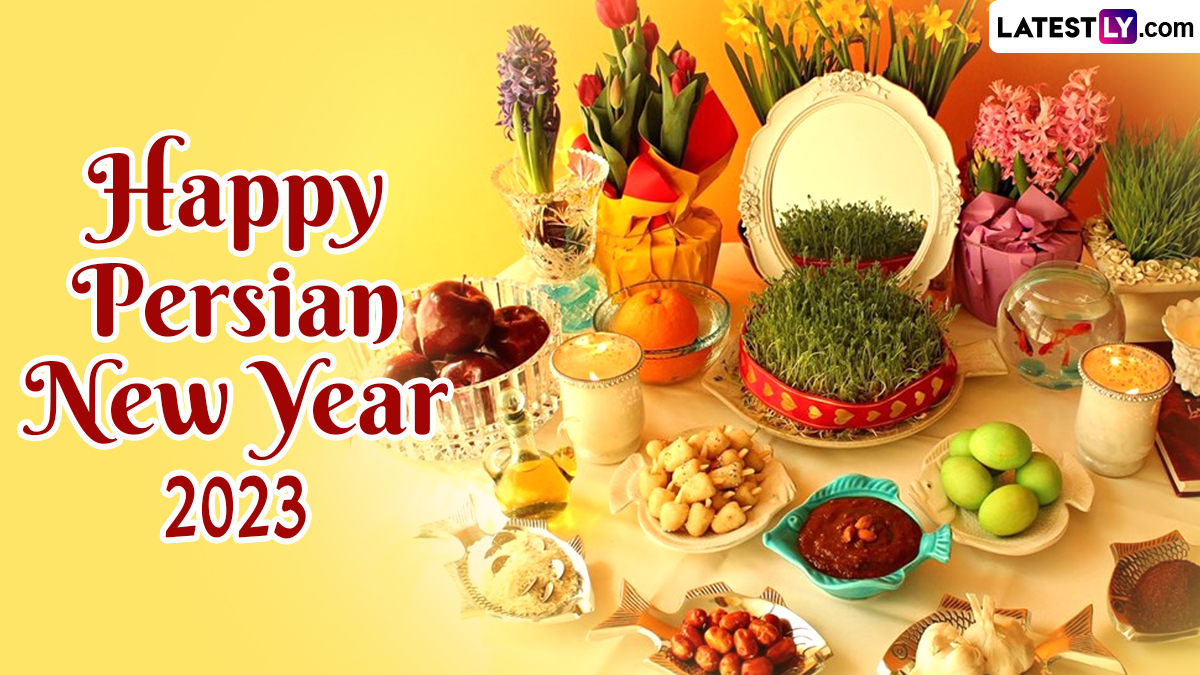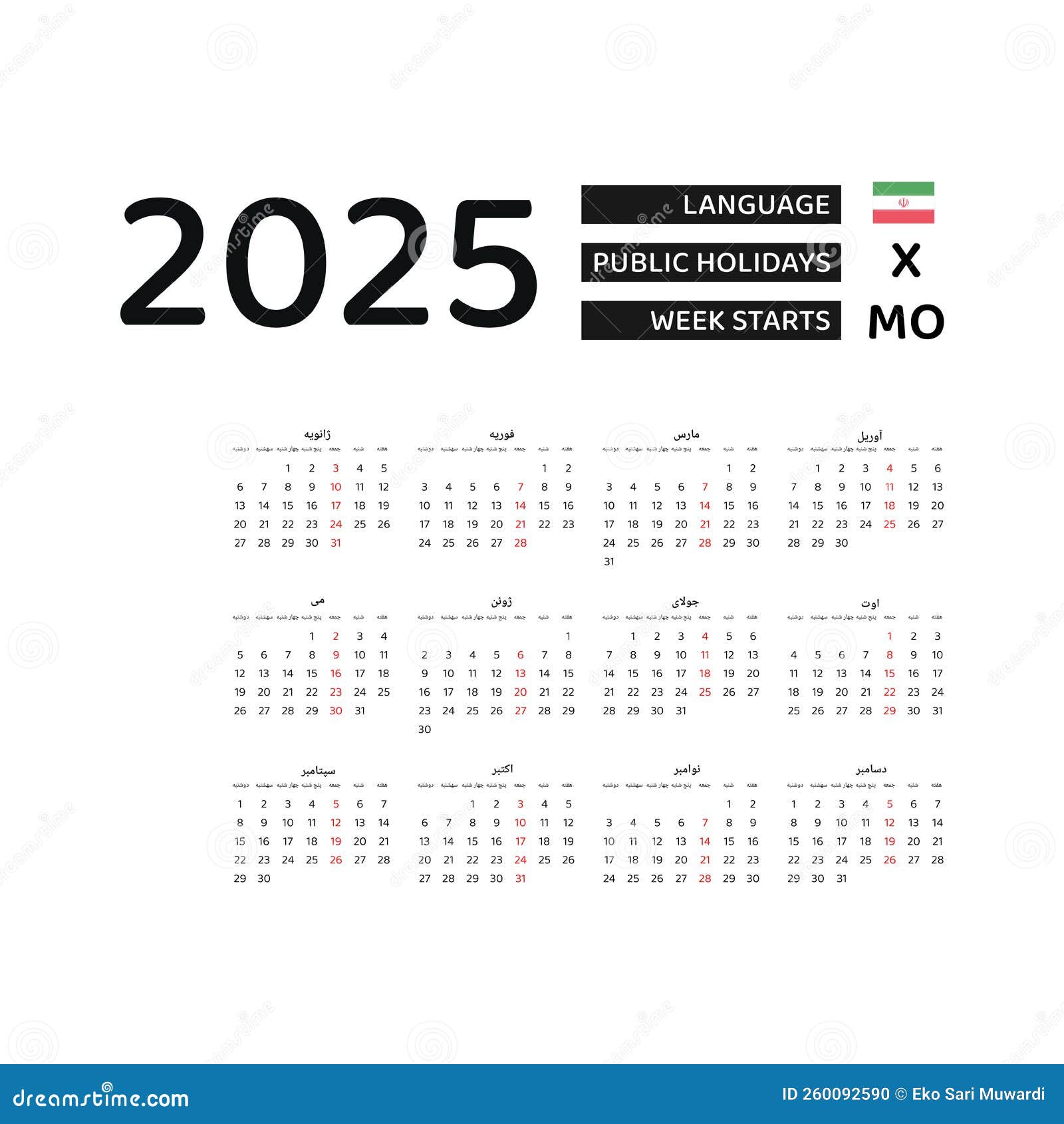Persian New Year 2025, also known as Norouz, is one of the most significant cultural celebrations in Iran and other countries that embrace Persian heritage. This ancient festival marks the beginning of spring and the start of the Iranian calendar year. With its deep-rooted traditions and vibrant customs, Norouz offers a fascinating glimpse into the rich history and cultural identity of the Persian-speaking world.
Norouz, which translates to "new day," is celebrated by millions of people around the globe. The festivities last for several weeks, beginning with preparations in late February and culminating in the first day of spring, typically around March 21st. In 2025, the Persian New Year will once again bring families and communities together to honor the past while welcoming the future with hope and optimism.
This article will explore the origins, traditions, and cultural significance of the Persian New Year 2025. Whether you're planning to celebrate Norouz yourself or simply want to learn more about this remarkable festival, you'll find everything you need to know right here.
Read also:Discovering Lawrence Meadows A Comprehensive Guide To His Life Achievements And Influence
Table of Contents:
- History and Origins of Persian New Year
- Traditions and Customs of Norouz
- The Haft-Seen Table: A Symbolic Display
- Traditional Persian New Year Food
- Special Clothing for Norouz
- Rituals and Celebrations
- Global Celebrations of Persian New Year
- Symbolism in Norouz
- Tips for Celebrating Persian New Year 2025
- The Future of Norouz Celebrations
History and Origins of Persian New Year
The history of Persian New Year dates back over 3,000 years, making it one of the oldest continuously celebrated festivals in the world. Norouz originated in ancient Persia, where it was initially observed as a Zoroastrian religious festival. Over time, the celebration evolved to incorporate elements from various cultures, including Islamic traditions.
Historians believe that Norouz was first celebrated during the Achaemenid Empire, where it served as a unifying event for the diverse peoples of the Persian Empire. The festival's association with the spring equinox highlights its connection to nature and the agricultural cycle, reflecting the importance of renewal and fertility in ancient societies.
Evolution of Norouz Through the Ages
As Persian culture spread across the Middle East and Central Asia, Norouz became an integral part of the cultural identity of many nations. During the Islamic Golden Age, the festival was embraced by Muslim scholars and rulers, who recognized its universal themes of renewal and reconciliation.
- Persian poets such as Ferdowsi and Hafez wrote extensively about Norouz, cementing its place in Persian literature.
- Today, Norouz is celebrated not only in Iran but also in countries like Afghanistan, Tajikistan, and Azerbaijan.
Traditions and Customs of Norouz
Persian New Year traditions are steeped in cultural significance and symbolic meaning. From cleaning the home to visiting family members, these customs create a sense of unity and continuity across generations.
One of the most important traditions is "Khaneh Tekani," or house cleaning, which involves thoroughly cleaning the home in preparation for the new year. This ritual symbolizes the removal of old, negative energy and the welcoming of positive vibes for the coming year.
Read also:June 29 Zodiac Sign Discover Your Personality Traits And Horoscope
Visiting Relatives and Friends
After the new year begins, families visit each other in a specific order, starting with the eldest members of the family. These visits typically involve exchanging gifts, sharing food, and offering blessings for the year ahead.
Source: UNESCO recognizes Norouz as an Intangible Cultural Heritage of Humanity, highlighting its global significance.
The Haft-Seen Table: A Symbolic Display
One of the most iconic elements of Persian New Year is the Haft-Seen table, a spread of seven items that begin with the letter "S" in Persian. Each item represents a different aspect of life and carries symbolic meaning.
Items on the Haft-Seen Table
- Sabzeh: Sprouts symbolizing rebirth and renewal.
- Samanu: A sweet pudding representing affluence and fertility.
- Senjed: Dried fruit of the oleaster tree, symbolizing love.
- Serkeh: Vinegar representing patience and wisdom.
- Seeb: Apples symbolizing beauty and health.
- Somagh: Sumac representing the color of sunrise and victory over evil.
- Sekkeh: Coins symbolizing wealth and prosperity.
Traditional Persian New Year Food
Food plays a central role in Persian New Year celebrations, with many dishes prepared specifically for the occasion. Some of the most popular Norouz foods include:
- Kuku Sabzi: A herb-based frittata that symbolizes the freshness of spring.
- Fesenjan: A rich walnut and pomegranate stew served with chicken or duck.
- Sabzi Polo Mahi: A dish of herbed rice served with fish, representing the transition from winter to spring.
Drinks and Desserts
Traditional beverages like doogh (a yogurt-based drink) and desserts such as baklava and nan-e berenji (rice flour cookies) are also enjoyed during the celebrations.
Special Clothing for Norouz
During Persian New Year, it's customary to wear new clothes as a symbol of renewal and fresh beginnings. Bright colors and intricate designs are often favored, reflecting the festive spirit of the occasion.
Children, in particular, are encouraged to dress in their finest attire, and families may purchase new outfits for everyone in the household.
Rituals and Celebrations
Various rituals and celebrations mark the Persian New Year, adding to the excitement and joy of the festival. Some of these include:
- Chaharshanbe Suri: A fire-jumping ceremony held on the last Wednesday before Norouz, symbolizing the purification of the soul.
- Sizdebedar: A picnic day held on the thirteenth day of the new year, where families gather outdoors to enjoy the spring weather.
Music and Dance
Musical performances and traditional dances are also an integral part of Norouz celebrations. Instruments like the tar, santur, and tombak are often played during these events, creating a lively and joyful atmosphere.
Global Celebrations of Persian New Year
Although Norouz is most closely associated with Iran, it is celebrated by millions of people around the world. In cities with large Persian communities, such as Los Angeles, London, and Dubai, public events and festivals are organized to mark the occasion.
According to the United Nations, over 300 million people celebrate Norouz globally, making it one of the largest cultural festivals in the world.
Cultural Exchange
Norouz provides an excellent opportunity for cultural exchange, allowing people from different backgrounds to learn about and participate in Persian traditions. Many cultural organizations host workshops, exhibitions, and performances to promote awareness of the festival.
Symbolism in Norouz
Symbolism is at the heart of Persian New Year celebrations, with every aspect of the festival carrying deeper meaning. From the Haft-Seen table to the rituals of Chaharshanbe Suri, each element reflects the values and beliefs of Persian culture.
The theme of renewal is especially prominent, with the festival serving as a reminder of the cyclical nature of life and the importance of embracing change.
Unity and Harmony
Norouz emphasizes the importance of unity and harmony, encouraging people to reconcile differences and strengthen relationships with family, friends, and the broader community.
Tips for Celebrating Persian New Year 2025
If you're planning to celebrate Persian New Year 2025, here are some tips to help you make the most of the occasion:
- Set up a Haft-Seen table at home and involve family members in preparing the items.
- Attend local Norouz events and festivals to experience the cultural atmosphere.
- Learn about the history and significance of Norouz to deepen your appreciation of the festival.
The Future of Norouz Celebrations
As the world becomes increasingly interconnected, the future of Norouz celebrations looks bright. With more people embracing the festival's universal themes of renewal and harmony, Norouz is likely to continue growing in popularity and influence.
Efforts to preserve and promote Persian cultural heritage, such as UNESCO's recognition of Norouz, will ensure that future generations can enjoy this remarkable festival.
Conclusion
Persian New Year 2025 offers a unique opportunity to experience the rich traditions and cultural significance of Norouz. Whether you're celebrating with family, attending public events, or simply learning about the festival, Norouz provides a chance to connect with others and embrace the spirit of renewal.
We invite you to share your thoughts and experiences in the comments below or explore other articles on our site to discover more about Persian culture and traditions.


